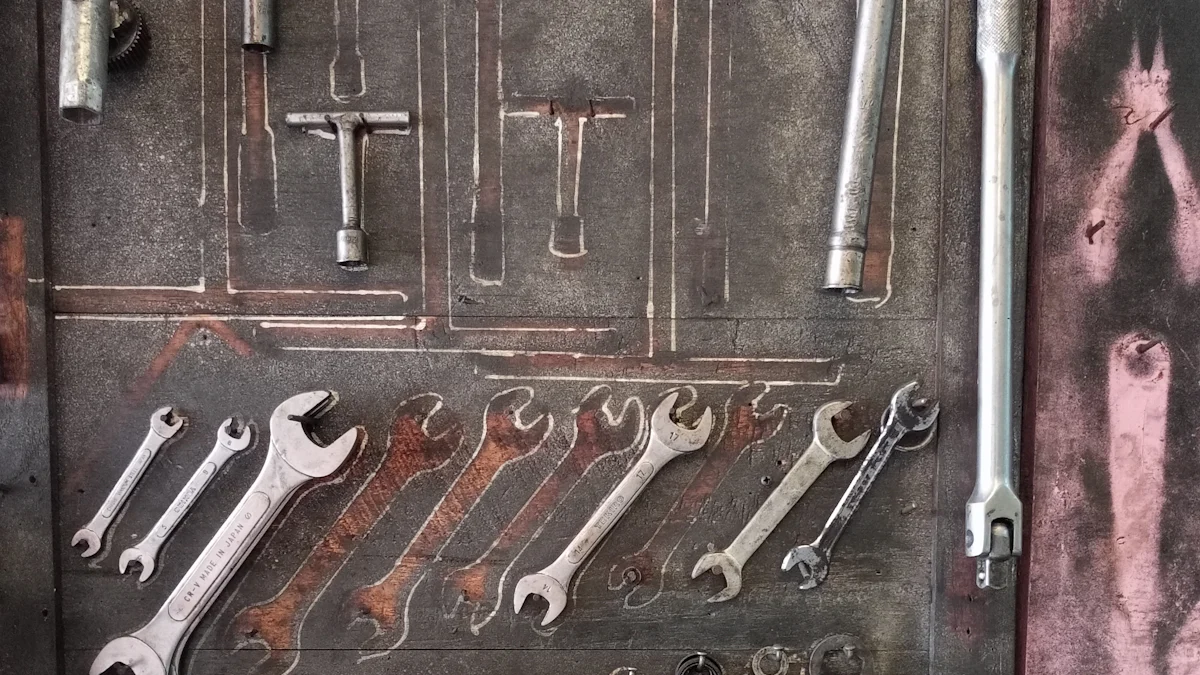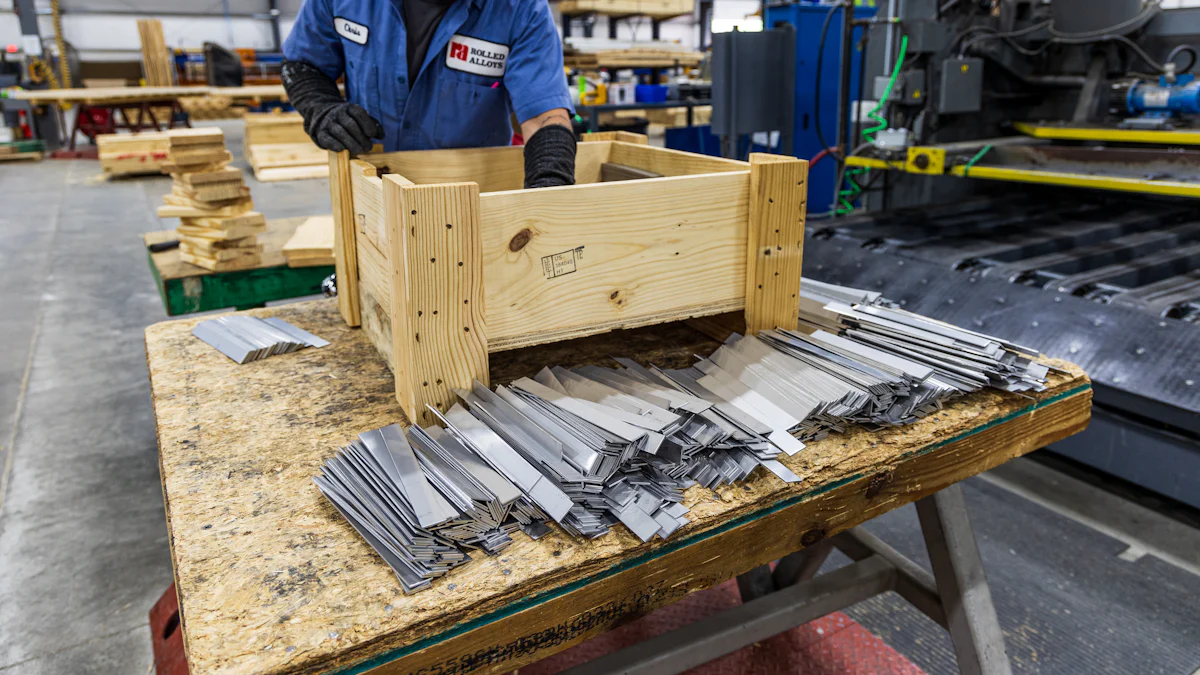
Maintaining pallet jack hydraulic fluid is crucial for the optimal performance of your equipment. Understanding the process of replacing this fluid ensures the longevity of your pallet jack. Proper maintenance not only enhances efficiency but also prevents unexpected breakdowns and costly repairs. As an educational guide, this blog will walk you through the essential steps required to maintain your pallet jack effectively.
Tools and Preparation

When it comes to maintaining your pallet jack, having the right tools and taking necessary precautions is paramount. Let’s delve into the essential aspects of preparing for the hydraulic fluid replacement process.
Required Tools
To kickstart the maintenance process, you’ll need a Slotted Screwdriver and Appropriate Oil. The slotted screwdriver will aid in accessing the hydraulic fluid reservoir, while using the correct oil ensures optimal performance of your pallet jack.
Safety Precautions
Prioritize safety by lowering the pallet jack before initiating any maintenance tasks. This step minimizes risks and creates a stable working environment. Additionally, wearing protective gear such as gloves and goggles shields you from potential hazards during the maintenance procedure.
Preparation Steps
Begin by positioning the pallet jack on a flat surface to ensure stability throughout the process. Next, gather all necessary tools and materials within reach to streamline the maintenance operation effectively.
As you prepare for replacing the hydraulic fluid in your pallet jack, remember that proper planning and organization are key to a successful maintenance routine.
Step-by-Step Guide

When it comes to maintaining your pallet jack, understanding the step-by-step process is essential for optimal performance. Let’s delve into the detailed guide on accessing, checking, and refilling the hydraulic fluid reservoir.
Accessing the Hydraulic Fluid Reservoir
To begin the maintenance process, start by locating the screw that secures the hydraulic fluid reservoir. This screw allows access to the inner components for inspection and refilling purposes. By removing this screw carefully, you can proceed to the next steps seamlessly.
Locating the Screw
The first task in accessing the hydraulic fluid reservoir is identifying the precise location of the securing screw. This crucial step ensures that you can easily remove and replace it when necessary. Locate this screw to prepare for further maintenance actions.
Removing the Screw
Once you have located the securing screw, use a slotted screwdriver to carefully remove it from its position. This action grants you access to the hydraulic fluid reservoir, enabling you to proceed with checking and refilling tasks efficiently. Ensure a steady hand while removing the screw to prevent any damage.
Checking the Hydraulic Fluid Level
After gaining access to the reservoir, it’s time to inspect and evaluate the current hydraulic fluid level. This step is crucial in determining whether your pallet jack requires additional oil for optimal functioning.
Visual Inspection
Perform a visual check inside the reservoir to assess the existing hydraulic fluid level accurately. Look for any signs of low oil levels or potential contaminants that may affect your pallet jack’s performance. Visual inspection provides valuable insights into your equipment’s maintenance needs.
Measuring the Fluid Level
For a more precise evaluation, consider measuring the exact fluid level within the reservoir. Use appropriate tools or indicators to determine if your pallet jack requires a refill. Accurate measurements ensure that you provide sufficient oil for smooth operation without overfilling.
Refilling the Hydraulic Fluid
Once you have assessed and confirmed the need for additional oil, proceed with refilling your pallet jack’s hydraulic fluid reservoir following these simple steps.
Selecting Correct Fluid
Choose appropriate oil recommended for your specific pallet jack model to maintain optimal performance. Using compatible hydraulic fluids ensures that your equipment operates smoothly without encountering any issues due to incorrect lubrication.
Topping Up The Fluid
Carefully pour in hydraulic oil up to an adequate level within the reservoir based on your previous assessments. Avoid overfilling or underfilling as both scenarios can impact your pallet jack’s efficiency negatively. Maintain precision during this process for optimal results.
By following these comprehensive steps diligently, you can effectively maintain and enhance your pallet jack’s performance through proper hydraulic fluid replacement procedures.
Securing the Reservoir
Replacing the Screw
- Remove the securing screw carefully using a slotted screwdriver to ensure access to the hydraulic fluid reservoir.
- Position yourself securely to avoid any accidental slips during this crucial step.
- Store the screw in a safe place to prevent misplacement and facilitate easy reinstallation later.
Ensuring a Tight Seal
- Align the screw with precision before tightening it securely back into place.
- Use appropriate force to ensure a snug fit without overtightening, preventing any potential leaks.
- Confirm that the seal is intact by conducting a visual inspection around the screw area for any signs of oil seepage.
By following these meticulous steps, you guarantee proper sealing of the reservoir, maintaining optimal hydraulic fluid levels within your pallet jack for seamless functionality.
Testing and Maintenance
Testing the Pallet Jack
To ensure the optimal performance of your equipment, lifting and lowering tests are essential. By conducting these tests regularly, you can verify that the pallet jack operates smoothly without any issues. Initiating a lifting test allows you to assess the device’s capability to raise loads effectively. Similarly, performing a lowering test enables you to evaluate the controlled descent of the pallet jack, ensuring safety during operations.
Checking for leaks is another crucial aspect of maintaining your pallet jack. Inspect all components thoroughly to identify any signs of hydraulic fluid leakage. Leaks can lead to reduced efficiency and potential safety hazards. By examining for leaks regularly, you can address any issues promptly and prevent further damage to your equipment.
Regular Maintenance Tips
Scheduled Inspections
Establishing a routine for scheduled inspections is key to prolonging the lifespan of your pallet jack. Regularly check all parts and mechanisms for wear and tear, loose fittings, or any abnormalities that may affect its performance. Through consistent inspections, you can detect minor problems early on and prevent them from escalating into major issues.
Fluid Replacement Frequency
Determining the fluid replacement frequency is crucial for maintaining optimal hydraulic fluid levels in your pallet jack. Depending on the intensity of usage and environmental conditions, establish a timeline for replacing the hydraulic fluid at regular intervals. Adequate lubrication is vital for smooth operation and longevity of your equipment.
By adhering to these maintenance tips diligently, you can ensure that your pallet jack remains in top condition, providing efficient performance whenever needed.
Regular maintenance tasks such as cleaning, lubrication, and inspection play a vital role in preventing issues and identifying potential problems early on. Proper maintenance and timely repairs are essential for keeping your hand pallet jack in top condition. By investing in professional servicing and understanding your specific needs, you can ensure that your pallet jack operates smoothly, saving both time and money in the long run.
Testimonials:
- Unknown
“While the frequency of servicing depends on various factors, the benefits of regular, planned maintenance are universal.”
- Unknown
“Pallet jacks are a valuable addition to any warehouse or retail store. With regular preventive maintenance, you can save time and money by spotting repairs before they happen.”
Post time: Jun-13-2024
